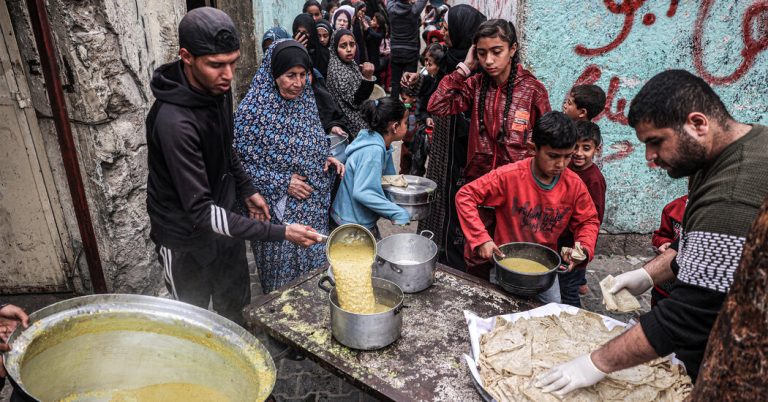Children in the Gaza Strip are facing severe and rapidly worsening food deprivation and an alarming number are suffering from the most life-threatening form of malnutrition, United Nations experts said on Friday in their most dire assessment yet of the unfolding crisis.
About one in 20 children in shelters and health centers in northern Gaza experience “severe wasting,” the most critical sign of malnutrition, defined as dangerously thin for their height, according to UNICEF, the UN children’s agency. The findings were based on screenings conducted by the agency and were released on Friday.
Among children under the age of 2, acute malnutrition, meaning the body lacks essential nutrients, has become quite common across Gaza, according to projections, with the most severe prevalence in northern Gaza. In some areas, it found that acute malnutrition rates had doubled since they were last recorded in January.
Even in Rafah, the densely populated area in southern Gaza with the most access to food, 10 percent of children under the age of 2 are severely malnourished and 4 percent are severely wasted.
Before the war, UNICEF said, the rate of acute malnutrition among young children was less than 1 percent, and severe wasting was extremely rare.
Lucia Elmi, UNICEF’s special representative in the Palestinian territories, who returned from Gaza last week, said she was particularly concerned not only by the number of children suffering from malnutrition, but also by how quickly their health was deteriorating. Young children cannot be adequately fed on water, flour and bread alone, he said.
“They need protein, they need vitamins, they need fresh produce and they need micronutrients, and all of those are completely missing,” Ms. Elmi said in an interview last week. “That’s why the deterioration was so fast, so fast and on this scale.”
Children are bearing extreme costs of the war in Gaza, both physically and mentally, children’s rights groups and experts reiterate. More than 12,000 children have been killed in the conflict and at least 23 children in northern Gaza have died of malnutrition or dehydration, according to Gaza’s health ministry.
Palestinian parents say that, in addition to the threat of shelling, their daily struggle is to find enough food for their children. Many said they choose to feed what little they have to their children rather than themselves.
Dominic Allen, the UN Population Fund’s representative for Palestine, who had just returned from a trip to Gaza, said on Friday that conditions there were worse than he could “describe or imagine in the pictures ». He told a news conference in Jerusalem that everyone he saw or spoke to was “smoked, emaciated, hungry”.
“The situation is beyond catastrophic,” he said.
Israel has said it is not limiting the amount of aid allowed into Gaza through border crossings and has recently signaled its support for new initiatives to deliver aid to Gaza by land, air and sea. Aid groups have criticized Israel, saying its insistence on inspecting every aid truck — and rejecting some — is the main cause of food shortages.
The chief executive of Save the Children, an aid group, in the United States, Janti Soeripto, said the crisis is currently, by far, the worst in the world for children.
“Every time I talk about Gaza, I think to myself that it couldn’t get any worse,” she said in an interview. “And every week, I’m proven wrong.”
Without a ceasefire, it has been difficult for groups to safely and comprehensively help the Palestinians.
Speaking from Rafah, Rachael Cummings, Save the Children’s director of humanitarian public health in the UK, said a lack of sanitation — including dirty or salty water and sewage in the streets — was exacerbating the hunger crisis there.
“If a child doesn’t eat adequate food or the right composition of food – they have poor water, poor hygiene – they will get very sick very, very quickly,” he said.
March 16, 2024
:
An earlier version of this article misstated the number of children who died in northern Gaza from malnutrition or dehydration. Gaza health officials say the total death toll is 27, of which 23 are children, not 27 children.
How we handle corrections




